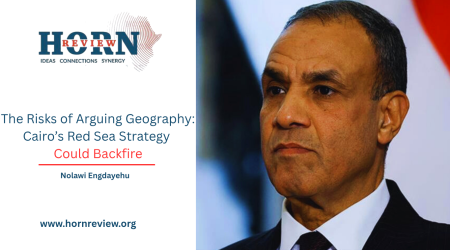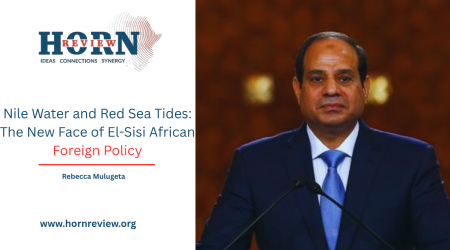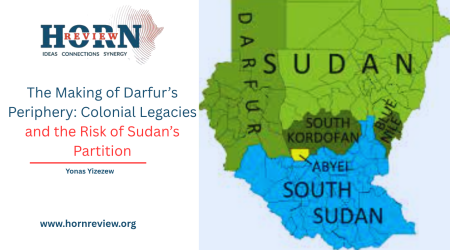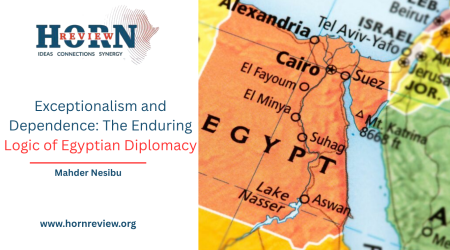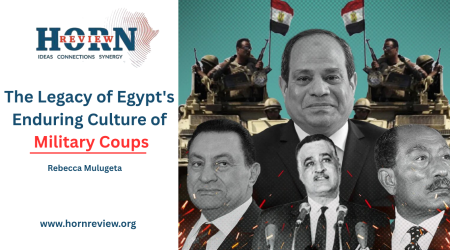
12
Nov
Nasserism and the Militarization of Sudanese Politics: A Legacy that Endures to the Present
From the late nineteenth century to the present, the political bond between Egypt and Sudan has been shaped by overlapping histories, shared geography and repeated interventions. Those structural links supplied fertile ground for an idea that took hold in the middle of the twentieth century that the military could be the principal engine of political renewal. Gamal Abdel Nasser’s revolution in Egypt transformed the coup from an act of narrow power seizure into a widely emulated model of statecraft. In Sudan, that model found both receptive partners and ready channels of influence.
Sudan’s long encounter with external control began under the Anglo-Egyptian Condominium, a legal and political arrangement that lasted from 1899 to independence in 1956. That arrangement left British administrators in effective control while perpetuating a habit of external direction and paternalism in Sudanese governance. Egyptian political elites across the twentieth century carried memories and legal arguments that tied the Nile valley together and that justified a special Egyptian interest in Sudan’s fate. The two conditions of Sudanese elites accustomed to outside direction and Egyptian elites that saw Sudan as part of their natural strategic neighborhood mattered since they made Khartoum receptive to external influence and Cairo predisposed to exercise it.
The Egyptian revolution of 1952 reshaped regional norms about military politics. The Free Officers’ overthrow of the monarchy and their creation of revolutionary councils reduced the coup to an authoritarian experiment in state control rather than a genuine program for national transformation. Nasser and his colleagues framed the officer coup as a national revolution that could fuse anti-imperialism, economic reform, and reorder politics from above. That rhetorical model traveled quickly along the Nile and into Sudanese officer circles, through personal contacts, shared education and the rhetorical pull of anti-imperial modernization. The result was that in the 1950s the image of the officer as savior of the state became a live option for Sudanese actors.
Sudan’s first post-independence experiment with parliamentary rule proved brittle. Political coalitions fragmented, the North–South conflict festered, and civilian administrations struggled to hold patronage networks and security forces together. Into that vacuum stepped the military. In 1958 General Ibrahim Abboud led a military takeover that closed the parliamentary era. Abboud, who had been commissioned into the Egyptian army earlier in his career and who rose in Sudanese forces that had a long institutional link to Egypt, presented his takeover as necessary to restore order and to implement development. The coup’s language and justifications echoed the new Egyptian template of military modernization even though its immediate drivers were internal. The ease with which the 1958 coup was accepted by parts of Sudanese public life showed how the idea of the military as state builder had become normalized.
Military networks and training were the everyday arteries that carried Egyptian influence into Sudan’s officer corps. From the colonial era through the 1960s Sudanese officers served, trained, or studied alongside Egyptian counterparts. These exchanges created professional ties and shared ranges of thinking about the military’s role in politics. Officers who had absorbed Egyptian doctrines, or who had personal ties in Cairo, returned to Khartoum with both technical skills and political instincts that favored decisive, centralized rule. Those personnel channels turned Cairo’s political example into an imitation that was practical, not just rhetorical.
The imprint of Nasserism became especially visible in 1969. On 25 May 1969 a small group of young officers led by Colonel Gaafar Nimeiri staged a coup and created a Revolutionary Command Council. Nimeiri’s regime adopted many of the language, institutions and policy experiments associated with Arab socialism and state-led development. Cairo under Nasser supplied more than inspiration. Egypt provided diplomatic backing and ideological validation and maintained institutional contacts that helped Nimeiri consolidate his early rule. The new Sudanese leadership borrowed the symbolic forms of Nasser’s councils, nationalization rhetoric and the logic that the military could impose rapid modernization. That convergence made the 1969 takeover a clear example of the Egyptian revolutionary template being transplanted into Khartoum.
The personal dimension of influence mattered as much as ideology. Nimeiri and several other Sudanese officers cultivated direct ties with Cairo’s political and military circles. When Khartoum aligned with Cairo on regional policy, or when Sudanese rulers presented themselves as guardians of the Nile and as anti-imperialist partners, Egypt rewarded them with diplomacy, technical support and political cover. When relations frayed, Cairo used back channels and relationships inside the Sudanese officer corps to preserve influence. That pattern turned Egyptian favor into a real instrument of survival for military rulers in Khartoum and lowered the domestic cost of seizing power.
Nimeiri’s oscillations between Arab socialism, a flirtation with communists, then a pivot toward the United States and finally toward Islamism under pressure, illustrate another mechanism by which Egypt’s model mattered. When his rule collapsed in 1985 he fled to Egypt where he remained in exile until 1999. Egypt’s willingness to host him demonstrated the practical shelter that the bilateral relationship could provide to deposed military figures and confirmed Cairo’s role as a regional sanctuary for friendly strongmen.
The environment that produced the 1989 coup was shaped by these precedents. On 30 June 1989 a cadre of officers allied with the National Islamic Front installed Omar al-Bashir, dismissing the fragile civilian government of Sadiq al-Mahdi. Bashir’s coup combined military discipline with an Islamist political project and then proceeded to consolidate power through purges, security-sector expansion and patronage networks. Egypt’s reaction under Hosni Mubarak was pragmatic. Cairo’s primary concern was stability on its southern frontier and a predictable partner on Nile matters. Mubarak’s government engaged Bashir, sometimes warmly, and used diplomatic ties to protect Egypt’s interests even when the rest of the world criticized Khartoum’s human rights record and Darfur abuses. The 1995 assassination attempt on Mubarak in Ethiopia and Cairo’s accusation that Sudanese elements were involved briefly chilled ties, but strategic concerns about the Nile and regional security kept the underlying preference for a stable ally in place.
During Bashir’s three decades in power the military and security apparatus grew into the main vehicle of governance. Security organs accumulated economic stakes, most visibly through militias and paramilitaries in peripheral regions. The institutionalization of the security state created entrenched incentives for military politics to reproduce itself. Externally, Egypt maintained working relations with Khartoum because a compliant Sudan served predictable downstream Nile interests. Those preferences shaped the international environment in which military plots, factional struggles and top level turnovers continued to be credible options for Sudanese elites.
The popular uprising that toppled Bashir in April 2019 momentarily altered the equation. Mass protests and a coherent civilian movement forced Bashir from the presidency and opened a fragile transition. Egypt’s posture during this period was characteristic of its long practice as it preferred a transition that secured Nile interests.
The October 2021 military takeover by General Abdel Fattah al-Burhan crystallized those preferences. Burhan’s seizure of power ended the transitional arrangements and many observers reported that Burhan had sought assurances from President Abdel-Fattah el-Sisi of Egypt immediately before the coup. Egypt’s initial public statements were measured and called for stability while its diplomatic behavior signaled a pragmatic willingness to work with the military. That reception from Cairo again reinforced the practical logic that military actors who could promise order and cooperation on Nile issues would find the regional environment hospitable. The October 2021 coup also reopened the competition among Sudan’s military actors for resources, patronage and institutional control.
Those institutional fissures exploded into full scale civil war on 15 April 2023 when open fighting broke out between the Sudanese Armed Forces under Burhan and the Rapid Support Forces under General Mohamed “Hemedti” Dagalo. The war quickly spread from Khartoum into Darfur and other regions, producing a catastrophic humanitarian emergency and exposing how decades of militarized politics, competing security entrepreneurs and external patronage could yield fragmentation. Regional powers supplied different forms of support to the rival camps, with Egypt aligning with the army. The 2023 fighting has made clear that the old template of military intervention, external sheltering and strategic patronage now operates inside a far more lethal and internationalized environment.
Taken together, the coups form a connected chain. The Free Officers’ example converted the coup into a model of statecraft. Sudan’s early coups then embedded that model inside local military institutions. Over decades those expectations hardened into a political culture in which the military remained the most credible pathway to political authority. Contemporary fractures, the rise of paramilitary actors with independent economic power and the entanglement of regional patrons are the evolved and now more dangerous outcome of that historical chain.
By Yonas Yizezew and Surafel Tesfaye, Researcher, Horn Review

